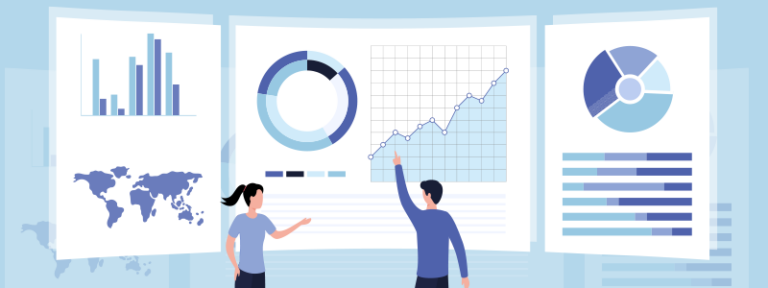
Applications of Predictive Analytics for Human Resources

Table of Contents
Human Resources is evolving with increasing diversity and distribution of resources. With such diverse business scenarios, organizations need to pre-plan resources and operations to meet the varying demands. Predictive analytics provides an edge by using historical data combined with current trends to bring out predictions related to HR (Human Resources) operations.
Analytics help in bringing out intuitive insights to maintain optimum resource allocation, availability, and resource engagement as per business needs. Furthermore, they help in managing the workforce in all respects. Right from hiring to training to allocation to engagement, you can bring out predictions at each turn to efficiently plan your operations. Predictive analytics platforms allow HR teams to gather futuristic insights to effectively meet current and future HR needs.
How Predictive Analytics Strengthen Your HR Operations
Demand Analysis, Hiring, and Attrition Management
With predictive analytics, you can measure tentative demand and attrition. Based on these insights, you can plan your hiring and talent acquisition processes. You can also get predictions on how many candidates are likely to accept or reject the job offers and can plan for corrections to be introduced in the process to increase the probability of successful hiring. You can bring out information on attrition with employee trends. For example, you can learn which employees are likely to call quits and plan retention strategies if necessary.
Better Performance Assessments
Assessing performance, planning IJPs or planning promotions is not really a single day or a single month process. It needs long-term assessment and observation to be accurate and prove profitable for business. With predictive analytics, organizations can predict areas and business points to consider while assessing performance. They can also bring out insights on skill gaps to train and create opportunities within the teams. Predictive analytics enables a data-driven approach to analyze employee activities and performance and assist in identifying potential leaders.
Proactive Employee Retention
While employee turnover is a common process, organizations must minimize attrition risks by predicting high-performing employees’ exit. Employees’ exit can sometimes be sudden, may require more time to fill if they are niche positions, in all cases it leaves a dramatic effect on a business’s performance and leaves them unprepared. Predictive analytics helps HR teams to measure E-SAT, predict employee needs based on insights from sentiment analysis and satisfaction surveys. It helps companies predict training and skill gaps and to prepare plans to uplift their employees and keep them engaged.
Workforce Analytics
Using predictive analytics, HR professionals can forecast from demand to hiring to training requirements to attrition and preplan all processes within the HR cycle. Predictive analytics gives insights to companies on effective allocation of resources based on need and demand. With predictive analytics, HR teams can detect potential risks earlier and performance gaps allowing better response to unfavorable situations. Using measurable analytics enables companies to find root causes of various issues and allows for smoother transition in addressing these issues and enabling a healthy, profitable work environment.
Conclusion
Predictive Analytics in HR has a vast potential to change the way companies use HR data. Many organizations still perform manual data mining through excel sheets, that is time-consuming and at the same time may prove less effective and accurate. Modern data analytics platforms provide predictive capabilities that go one step beyond the usual analytics and prepare HR functions with futuristic insights so as they can mitigate risks and run smoothly.
Overall, predictive analytics solutions help to bring out intuitive information and are easy to operate. With automated machine learning and NLP – end users can easily dig out insights for different HR processes and fasten data-based decision making. With predictive analytics, HR teams are less likely to assume general mood in the organization, instead, can rely on real data to take action that will drive productive business outcomes.

